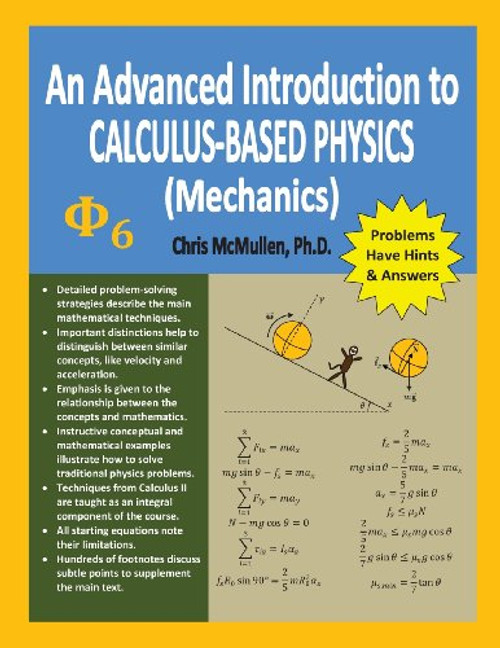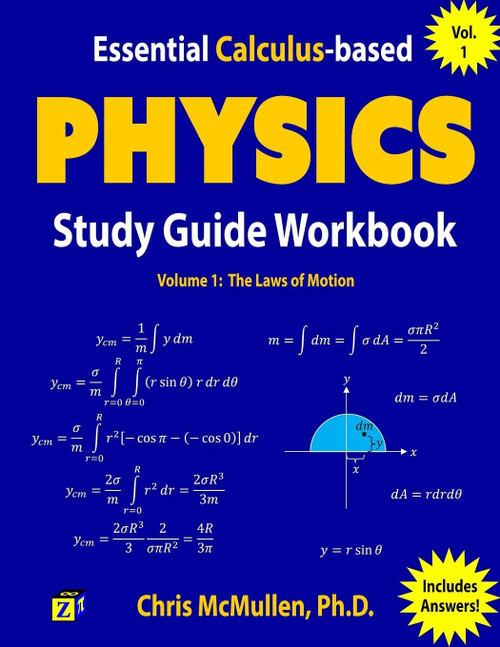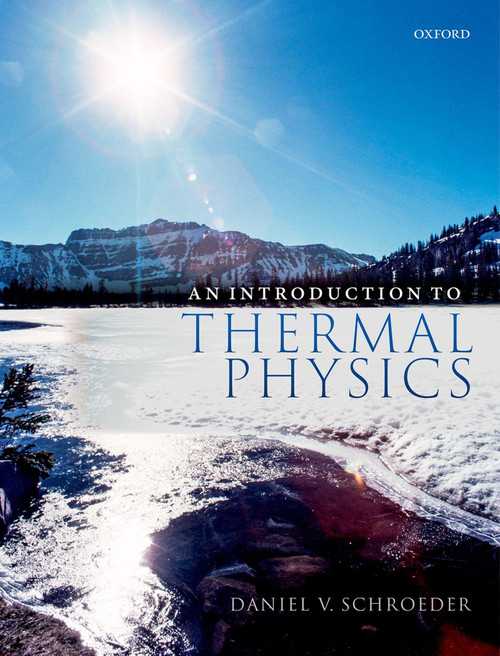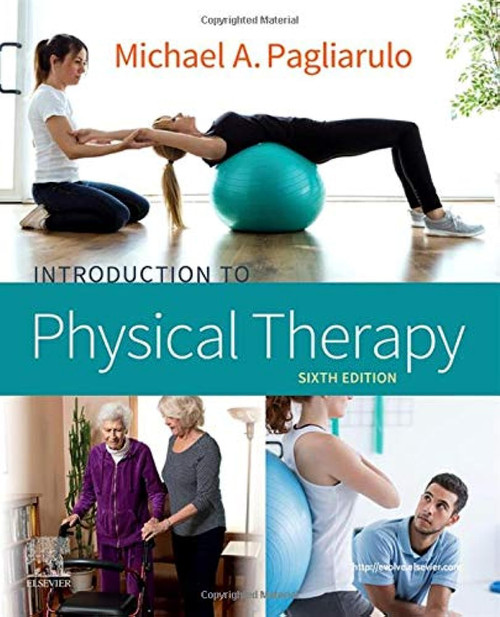CONTENTS: This textbook covers the mechanics portion of first-year calculus-based physics, including the following topics: Uniform and non-uniform acceleration Vector addition and coordinate systems Applying Newton's laws of motion Uniform circular motion (including satellites) Work, power, and conservation of energy Center of mass, collisions, and rockets Thorough coverage of rotation AUDIENCE: This calculus-based physics textbook is geared toward independent learners who can handle the rigors of calculus and who seek to develop a strong introduction to the fundamentals of physics, both mathematically and conceptually. It could also serve as a useful reference for physics and engineering students who have gone beyond the first year of physics, but who would like to review the fundamentals as they explore more advanced fields of physics. PREREQUISITES: No previous exposure to physics is assumed. The student should be familiar with the basic techniques of differentiation and integration, including polynomials and trig functions, and should be fluent in algebra and familiar with the basic trig functions. COREQUISITES: The textbook teaches Calculus II skills as needed, such as the technique of integrating via trigonometric substitution. The textbook also reviews some Calculus I skills which students often forget, such as the mean-value theorem, l'Hopital's rule, and the chain rule. This is not done in an introductory chapter or an appendix, but in the main text as these ideas first become useful. IMPORTANT DISTINCTIONS: Boxes of important distinctions are included in order to help students distinguish between similar concepts--like average speed and average velocity, between velocity and acceleration, or between mass and weight. TABLE OF EQUATIONS: There is a handy table of equations organized by topic on the back cover of the textbook. The equations in the text (but not on the cover) also include notes to help students understand any limitations that the equations may have (e.g. some equations only apply if acceleration is uniform or if mass is constant). MATHEMATICAL & CONCEPTUAL EMPHASIS: There is much emphasis both on learning the mathematics precisely and understanding the concepts at a deep, precise level. An underlying idea is that students should not guess at concepts, but that concepts are mathematically motivated: Let the equations be your guide. PROBLEM-SOLVING STRATEGIES: All of the main problem-solving strategies--like projectile motion, applying Newton's second law, or conserving energy--are highlighted and described step-by-step and in detail. Examples illustrate how to carry out all of the problem-solving strategies. NOTES: Several notes are boxed to describe important points, common mistakes, and exceptions. Hundreds of footnotes are included to discuss subtleties without interrupting the flow of the text. EXAMPLES: Conceptual and problem-solving examples were selected based on their instructiveness in elucidating important concepts or illustrating how to carry out important problem-solving strategies; quality was favored over quantity. Simple plug-and-chug examples and problems are scarce, since the audience for this book is independent students. HINTS & ANSWERS: 100% of the conceptual questions have both hints and answers, since it's crucial to develop a solid understanding of the concepts in order to succeed in physics. Some of the practice problems have answers to help independent students gain confidence by reproducing the same answers, while 100% of the practice problems have hints so that students can see if they are solving the problems correctly (even if the problem doesn't have the answer in the back).
An Advanced Introduction to Calculus-Based Physics (Mechanics)
Createspace Independent Publishing Platform
$29.76 - $43.36
- UPC:
- 9781463644086
- Maximum Purchase:
- 2 units
- Binding:
- Paperback
- Publication Date:
- 5/9/2012
- Author:
- Chris McMullen
- Language:
- English: Published; English: Original Language; English
- Pages:
- 574











